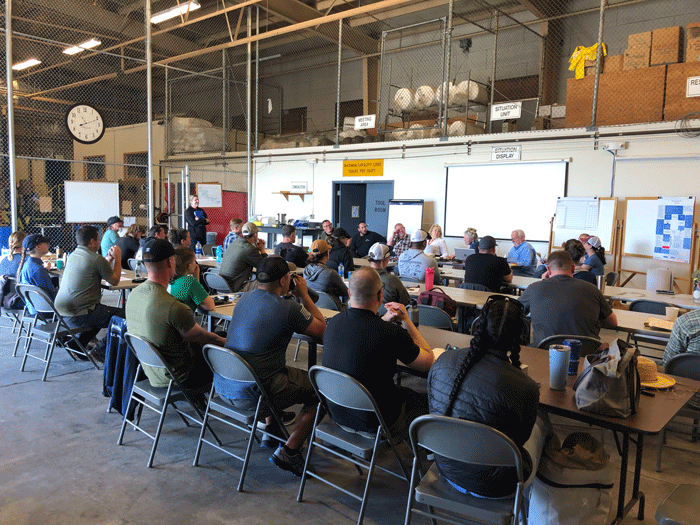Northwest Area Committee Oiled Shoreline Response Workshop
AUG. 8, 2022 — On July 20-21, 2022, the Northwest Area Committee (NWAC) hosted an Oiled Shoreline Response Workshop at the Naval Air Station on Whidbey Island, Washington. Attendees represented the response community with over forty federal, state, tribal, and industry participants.

The two-day workshop included classroom discussion, break-out group exercises, and a Shoreline Cleanup Assessment Technique (SCAT) field survey. The objectives of the workshop were to:
- Provide an opportunity for the NWAC spill response community to discuss and review key components of a comprehensive shoreline response program.
- Identify areas for process improvements, and new/updated tools or guidelines for improving shoreline response programs in the Pacific Northwest.
- Identify process improvements and practices for testing and exercising more components of a comprehensive shoreline response program in exercises throughout the region.
The workshop began with an overview of the Shoreline Response Program and a discussion of different shoreline types and how those affect removal methods. This was followed with a presentation on the SCAT mission and how it affects the command decision-making process on defining treatment targets and choosing the methods to reach the targets. Each presentation was supported by small group exercises where participants discussed how they would respond to hypothetical spills on their assigned shoreline sections.
On day two of the workshop, participants worked in groups to complete a SCAT field exercise, discussed different shoreline habitats represented in the area, completed a shoreline assessment form, and summarized the results to the larger group. Teams evaluated shoreline treatment recommendations and environmental trade-offs that would be appropriate to work towards cleanup endpoints for the scenario. There was also an overview on how shoreline treatment recommendations are utilized to prepare for the tactics meeting.
Participants practiced working within the Incident Command System structure, working through how SCAT operations fit into the overall incident planning cycle, with simulated briefings to the SCAT Coordinator, Environmental Unit Leader, and the Section Chiefs for Operations, Logistics, and Planning. The day concluded with a brief overview of the Regional Response Team 10 and the Area Contingency Plans for the Northwest, Sector Puget Sound, and Sector Columbia River. These overviews were presented by the co-chairs from the U.S. Coast Guard, Environmental Protection Agency, and Washington Department of Ecology.
The workshop provided capacity building, identified focus areas to practice in exercises, and continually improved the Northwest Area Contingency Plan’s response capabilities through training in the region.
OR&R Emergency Response Division participants included CDR Faith Knighton, scientific support coordinator; LTJG Kyle Vincent, regional response officer; and Dylan Righi, oceanographer.
